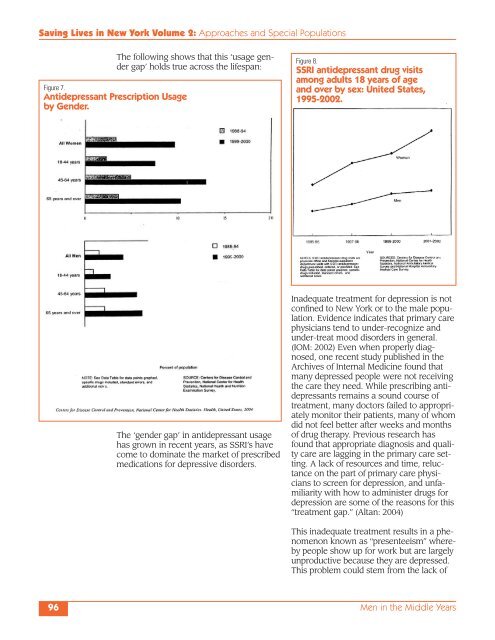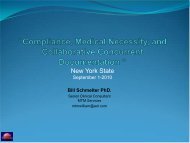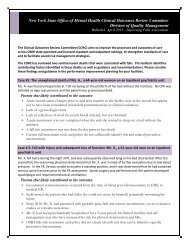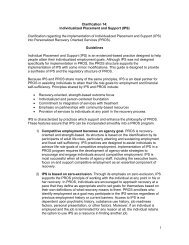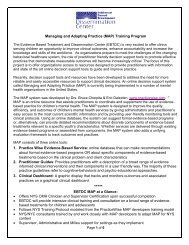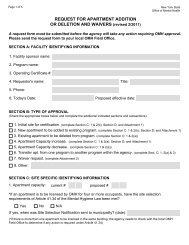Download - New York State Office of Mental Health
Download - New York State Office of Mental Health
Download - New York State Office of Mental Health
You also want an ePaper? Increase the reach of your titles
YUMPU automatically turns print PDFs into web optimized ePapers that Google loves.
Saving Lives in <strong>New</strong> <strong>York</strong> Volume 2: Approaches and Special Populations<br />
The following shows that this ‘usage gender<br />
gap’ holds true across the lifespan:<br />
Figure 7.<br />
Antidepressant Prescription Usage<br />
by Gender.<br />
Figure 8.<br />
SSRI antidepressant drug visits<br />
among adults 18 years <strong>of</strong> age<br />
and over by sex: United <strong>State</strong>s,<br />
1995-2002.<br />
The ‘gender gap’ in antidepressant usage<br />
has grown in recent years, as SSRI’s have<br />
come to dominate the market <strong>of</strong> prescribed<br />
medications for depressive disorders.<br />
Inadequate treatment for depression is not<br />
confined to <strong>New</strong> <strong>York</strong> or to the male population.<br />
Evidence indicates that primary care<br />
physicians tend to under-recognize and<br />
under-treat mood disorders in general.<br />
(IOM: 2002) Even when properly diagnosed,<br />
one recent study published in the<br />
Archives <strong>of</strong> Internal Medicine found that<br />
many depressed people were not receiving<br />
the care they need. While prescribing antidepressants<br />
remains a sound course <strong>of</strong><br />
treatment, many doctors failed to appropriately<br />
monitor their patients, many <strong>of</strong> whom<br />
did not feel better after weeks and months<br />
<strong>of</strong> drug therapy. Previous research has<br />
found that appropriate diagnosis and quality<br />
care are lagging in the primary care setting.<br />
A lack <strong>of</strong> resources and time, reluctance<br />
on the part <strong>of</strong> primary care physicians<br />
to screen for depression, and unfamiliarity<br />
with how to administer drugs for<br />
depression are some <strong>of</strong> the reasons for this<br />
“treatment gap.” (Altan: 2004)<br />
This inadequate treatment results in a phenomenon<br />
known as “presenteeism” whereby<br />
people show up for work but are largely<br />
unproductive because they are depressed.<br />
This problem could stem from the lack <strong>of</strong><br />
96 Men in the Middle Years


